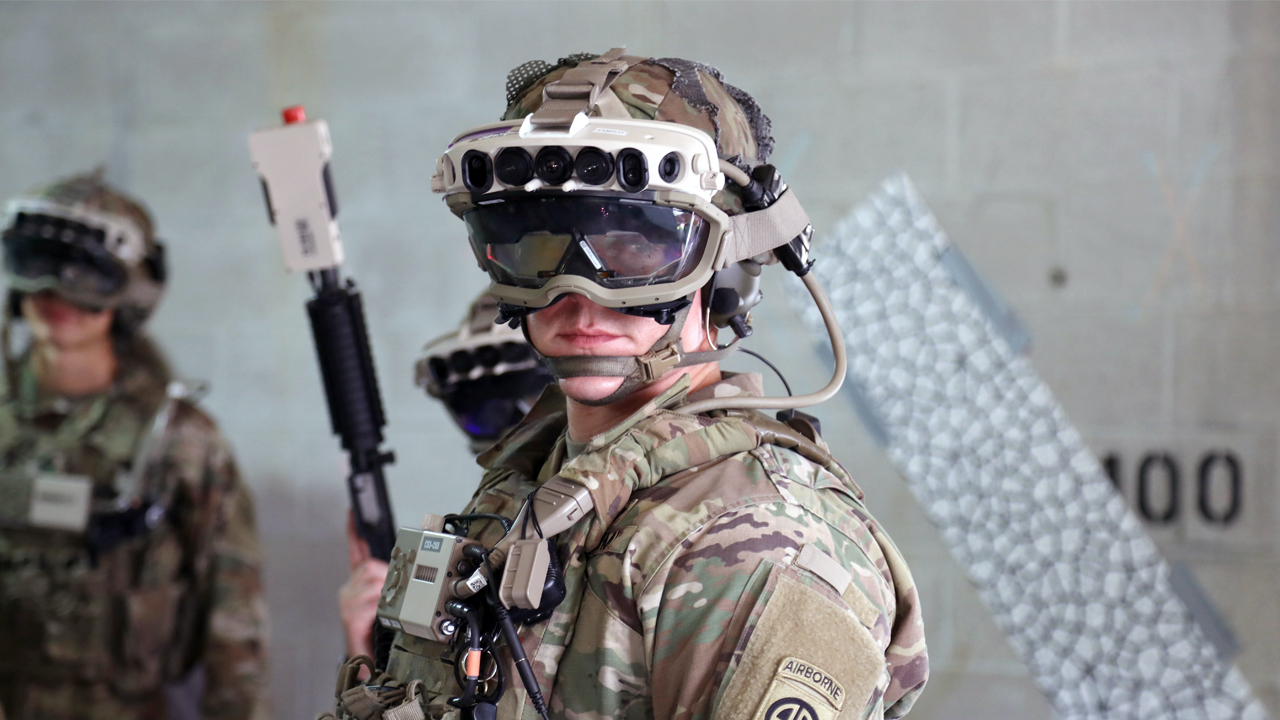

Soldiers just got one step closer to getting their hands on the Army’s newest game-changing heads-up display.
The Army announced on Wednesday that it awarded Microsoft a contract to move the Integrated Visual Augmentation System (IVAS) to “production and rapid fielding.” The futuristic goggles are expected to seriously increase soldiers’ situational awareness and communication, and has been one of Army Future Command’s most anticipated developments.
It’s also a piece of tech that soldiers never “imagined we would see in our careers,” said Sgt. John Martin, a soldier in the 3rd Infantry Division.
“It’s futuristic technology that we’ve all talked about and seen in movies and video games, but it’s something that we never imagined we would have the chance to fight with,” said Martin, a Bradley master gunner, in a February press release. “It’s definitely technology that we are really excited to use as soon as they can get it to us.”
According to the Army’s announcement, the contract is for 10 years and could ultimately be worth as much as $21.88 billion. As for when soldiers will start getting their hands on the IVAS, the Army is planning to start getting the high-tech goggles out to soldiers later this year.
Army Futures Command held its third soldier touchpoint with the IVAS in October last year, getting feedback from soldiers with the 82nd Airborne Division and a handful of Marines to help perfect the system’s development. The service members tested a more rugged version of the IVAS throughout company-size training events at Fort Pickett, Virginia, which included things like land navigation, trench clearing, and rapid target acquisition.
The goggles, based on Microsoft’s HoloLens, use augmented reality to project a life-like training environment for soldiers so they can efficiently train ahead of missions; they’re also outfitted with features like high-resolution night vision, and will even help soldiers translate written foreign languages on the spot.
The Army found a different use for the IVAS last year at the start of the novel coronavirus (COVID-19) outbreak, having soldiers at Fort Benning use the IVAS’ thermal sensors to “rapidly assess” other soldiers’ temperatures as they arrived for basic training.
Touchpoints like the one last year are part of the Army’s ongoing plan to put soldiers’ needs at the forefront of a product’s design to make sure it’s actually useful and efficient for the troops who will eventually use it. Brig. Gen. Tony Potts, the director of PEO Soldier, said last year in a statement that they have already “learned so much” from this process.
“If we want to develop systems at the speed of relevance and systems that our soldiers want to use,” Potts said. “This is the way we have to do it … Our real desire is to let soldiers design it, and then our engineers build what they design.”
Related: The Army’s new infantry goggles put the ‘Tron’ in ‘Army Strong’
Featured photo: Soldiers don the Capability Set 3 (CS3) militarized form factor prototype of the Army’s Integrated Visual Augmentation System (IVAS) and wield a Squad immersive Virtual Trainer (SiVT) during a training environment test event at its third Soldier Touchpoint (STP 3) at Fort Pickett, Virginia. (Courtney Bacon/PEO Soldier)